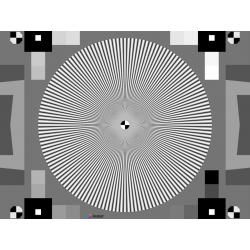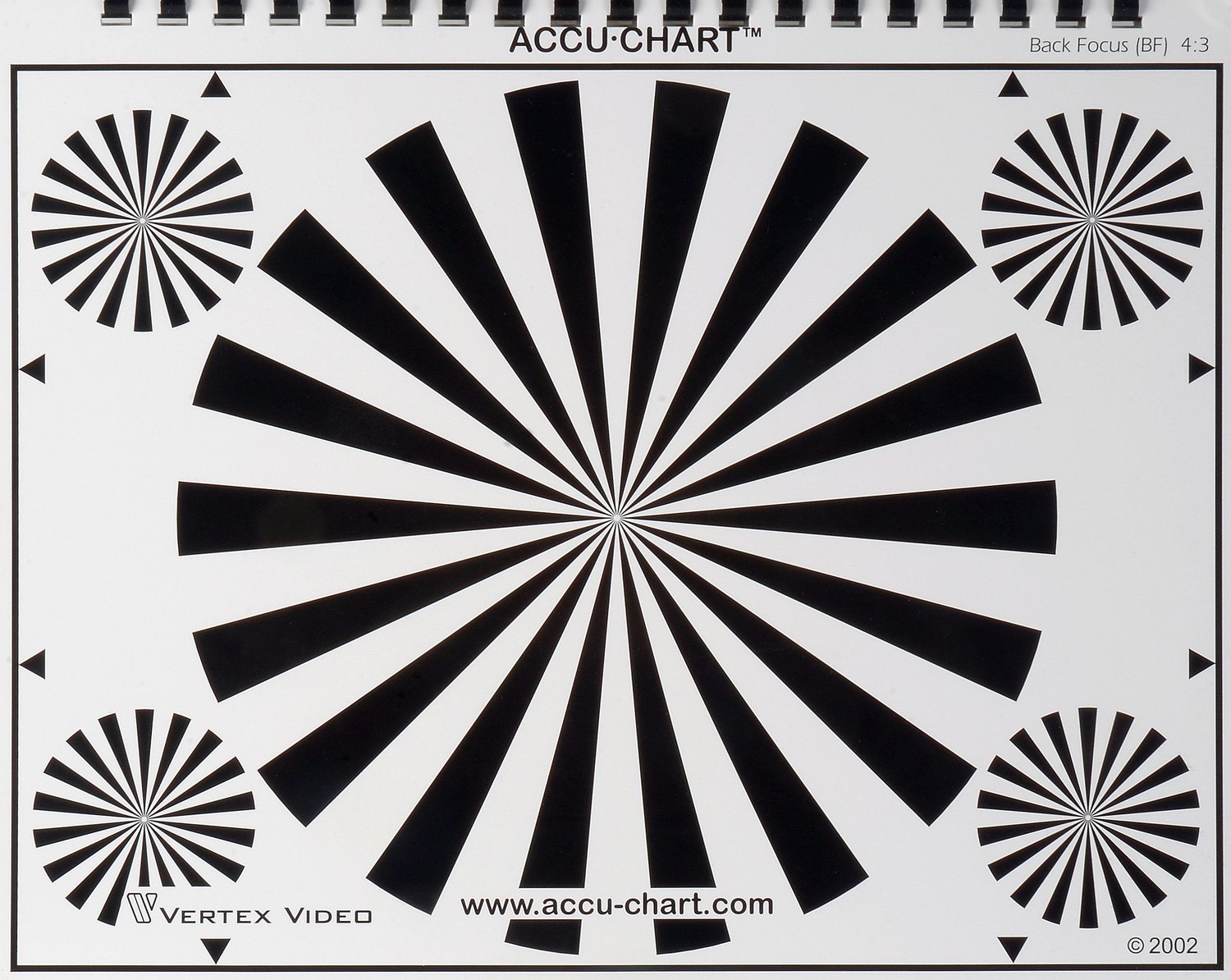

Thereby, limitations of image co-registration with commonly used optical flow approaches can be neglected. Then, one or more super-resolved images are calculated as a hybrid of classic super-resolution method and demosaicing while considering photogrammetric back-projections onto the (data self-derived) 3D-surface. The novel super-resolution approach improves spatial resolution of aerial imagery and true ortho-mosaics by taking a set of multiple low-resolved raw images (color filter array), their optimized exterior and interior orientation parameters and the derived 3D-surface as input.
#PHOTO CAMERA LENS TEST TARGETS SIEMENS STAR SOFTWARE#
The related software tool is able to combine different super-resolution techniques and includes known image quality parameter in subsequent calculations. Accurate and verified underlying methodology (enabling self-validation)Īs part of a further objective of this thesis, a super-resolution approach to improve spatial resolution of aerial images has been developed and evaluated.Validation and quantification of measurement influences and certainties.Reliable and objectively obtained spatial resolution parameters.The framework definition and corresponding tool satisfy the following requirements: Moreover, the development of an associated software measurement tool has been accomplished as part of this thesis, which also supports the norm for aerial image quality, spatial resolution in particular. With respect to define the norm-procedure every measurement influence is quantified where possible and in other cases arrangements are specified to diminish their influence. The aforementioned framework then is utilized to identify related issues to a standardized process obtaining spatial resolution parameters as an image quality criterion to support an upcoming standard DIN 18740-8 “Photogrammetric products – Part 8: Requirements for image quality (quality of optical remote sensing data)”.

Furthermore, a detailed review for different structures and methods to measure spatial resolution is included. Therefore, this thesis provides a description of a framework for the imaging process of remote sensing sensors mathematically and methodologically including imaging components and subsequent processes. There are multiple requirements for objective characterization of resolution parameters for imaging systems and it is beneficial to determine true spatial resolution as a standardized, novel procedure providing all corresponding measurements and confidences.Īlthough acquisition of resolving power and effective spatial resolution is a well-studied field of research, there are still several scientific questions to be answered when it comes to a standardized (eventually absolute) determination. It generalises to unseen lenses and can be applied for single photographs, with the performance improving if multiple photographs are available. We then use the same lenses to record natural images and employ a data-driven supervised learning approach using a convolutional neural network to estimate the MTF on small image patches, aggregating the information into MTF charts over the entire field of view. We use a custom grid display to accurately measure the point response of lenses to acquire ground truth training data. This work presents a method to estimate the MTF of camera lens systems directly from photographs, without the need for expensive equipment. Fortunately, images recorded through an optical system contain ample information about its MTF, only that it is confounded with the statistics of the images. Instead, MTFs based on simulations or, at best, MTFs measured on other specimens of the same lens are used.

Measuring it is costly and it is thus rarely available for a given lens specimen. The modulation transfer function (MTF) is widely used to characterise the performance of optical systems.


 0 kommentar(er)
0 kommentar(er)
